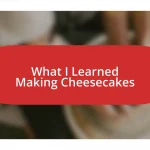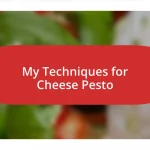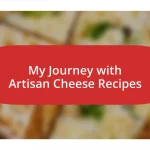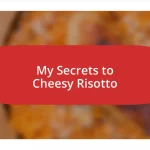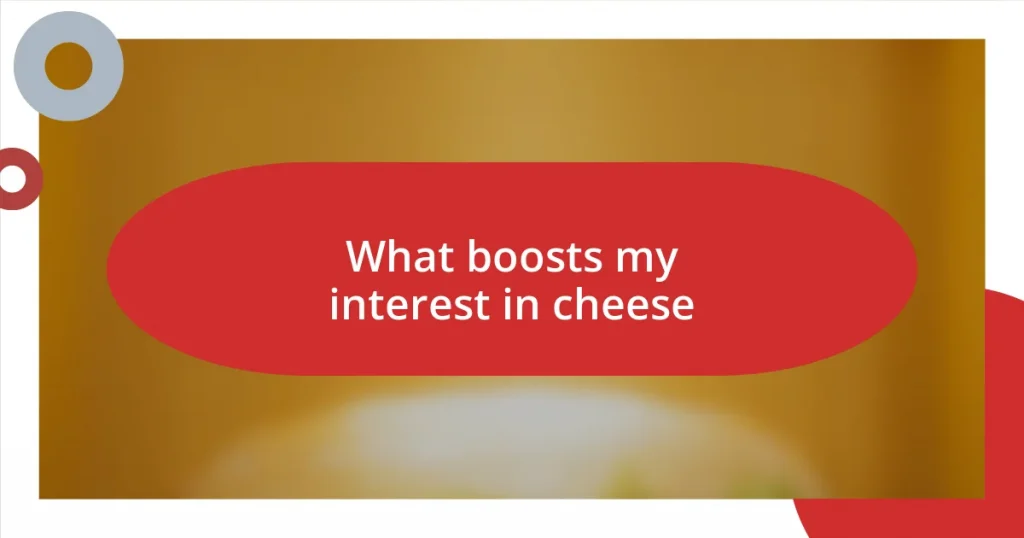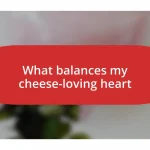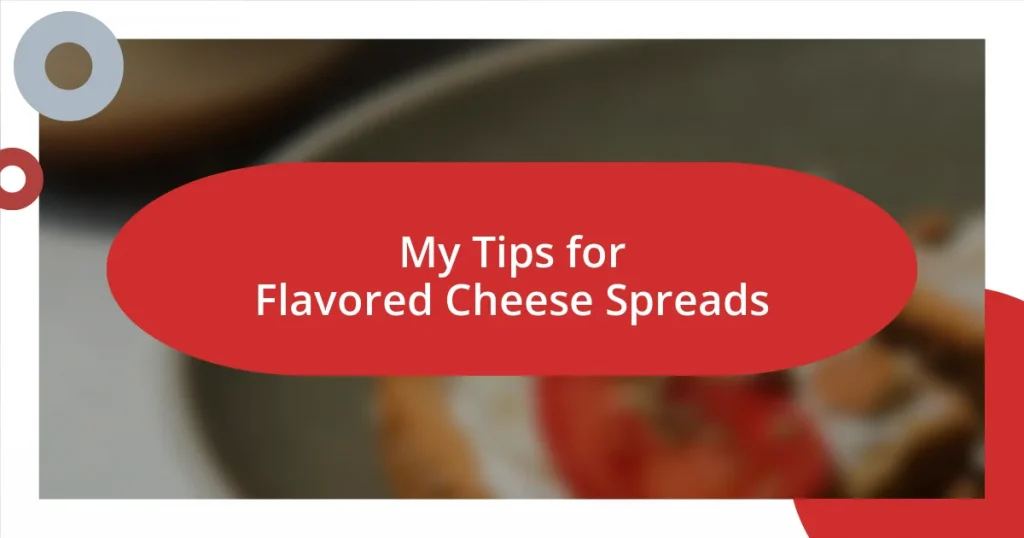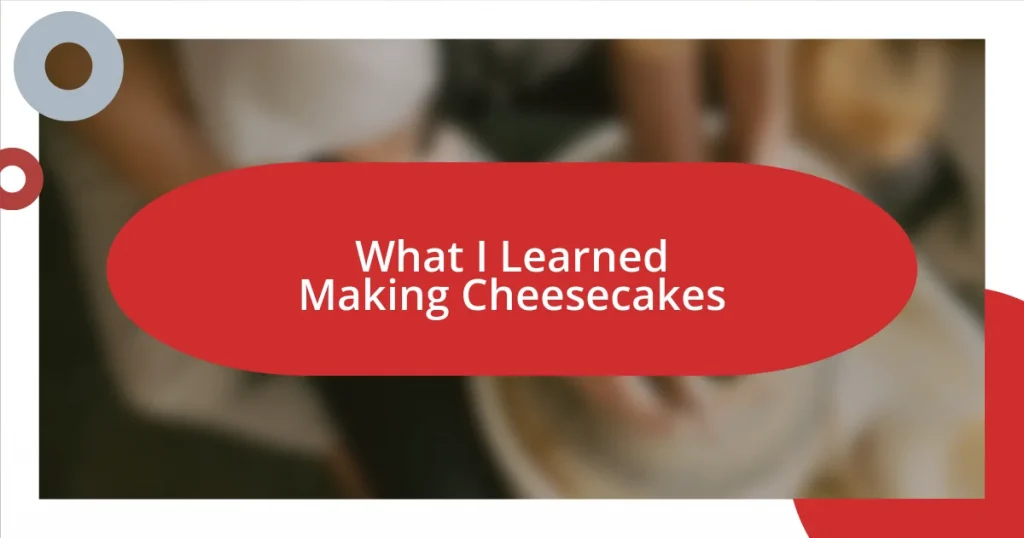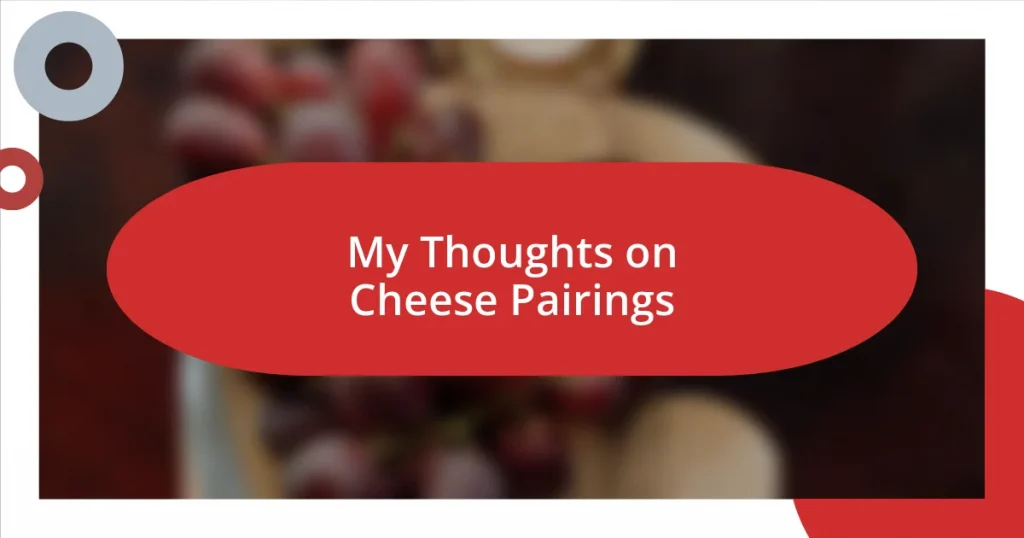Key takeaways:
- Cheese appreciation involves exploring the sensory journey, including taste, texture, and aroma, which connects us to history and emotions.
- Understanding factors that influence cheese flavor—such as milk type, aging processes, and terroir—enhances our tasting experience.
- Pairing cheese with complementary foods and serving it at the right temperature significantly elevates enjoyment and creates memorable culinary moments.
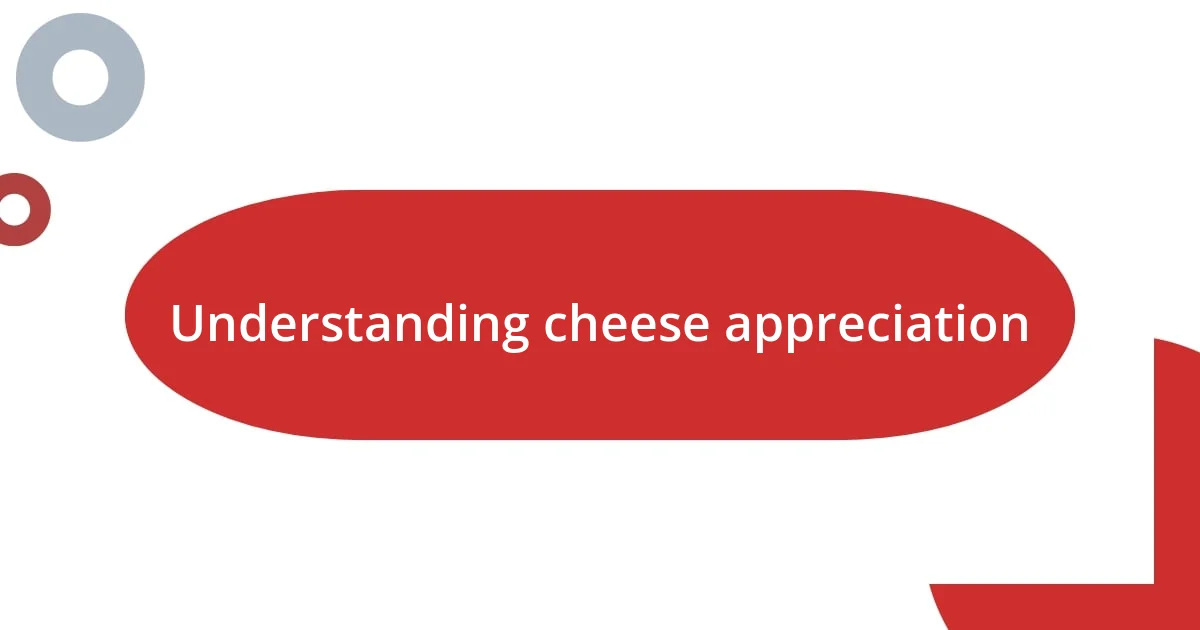
Understanding cheese appreciation
When I first discovered a truly exquisite cheese, it felt like unlocking a secret world of flavors. Each bite was not just about taste; it was about the history embedded in the cheese, the craftsmanship of the cheesemaker, and the unique character of the region it came from. Have you ever been transported to a lush countryside with just one nibble? That’s the magic of cheese appreciation.
I vividly remember the first time I tried a well-aged cheddar. The complexity of its flavors was so captivating that I found myself contemplating what makes cheese remarkable. It’s not just the taste; it’s the texture, the aroma, and the emotions tied to sharing it with friends over a glass of wine. Isn’t it fascinating how something as simple as cheese can spark such deep reflections about enjoyment and connection?
Understanding cheese appreciation goes beyond merely enjoying a cheeseboard. It’s about exploring the sensory journey each variety offers. For instance, have you noticed how a soft Brie can evoke comfort while a crumbly Stilton might bring excitement to your palate? The more I delve into cheese, the more I recognize that each piece tells a story, and I’m eager to listen.
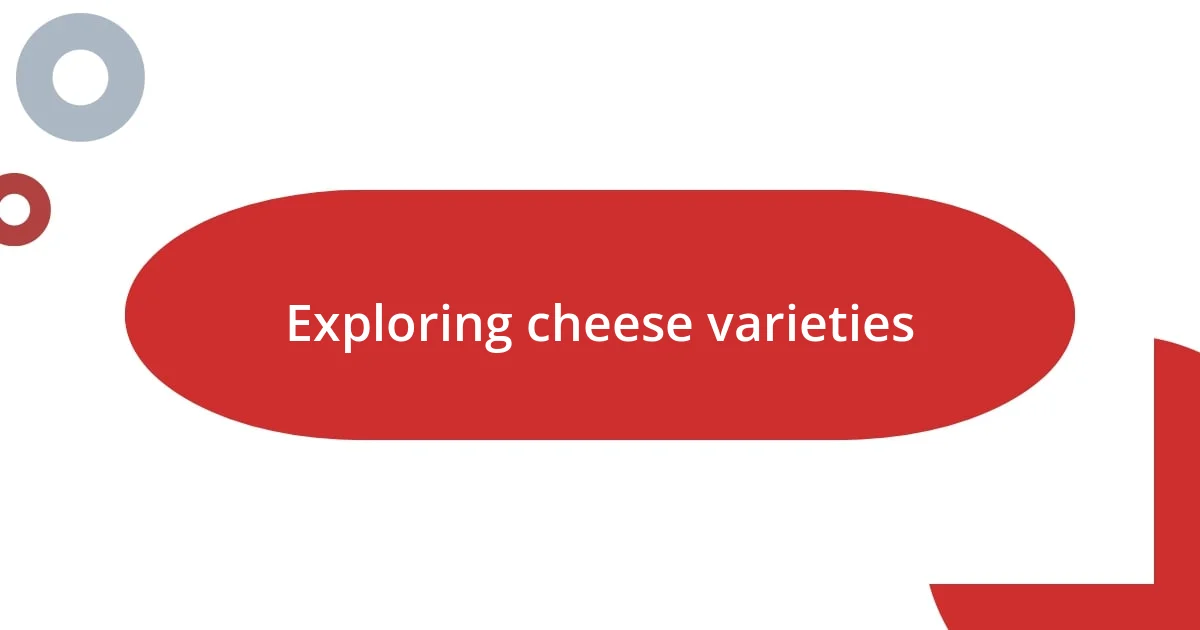
Exploring cheese varieties
When I started exploring various cheese varieties, I was amazed at how diverse the world of cheese truly is. One memorable moment was during a visit to a local cheese festival, where I tasted everything from creamy burrata to pungent Roquefort. Each sampling opened my eyes (and palate) to the idea that every cheese variety has its own identity, influenced by ingredients, aging processes, and the environment in which it’s made.
The texture of a cheese can completely transform your experience. I remember biting into a fresh mozzarella that was so soft and milky, it felt like a hug for my taste buds. In contrast, trying a hard Parmigiano-Reggiano was a delight in its own right, offering a nutty crunch that begs to be savored. It’s fascinating how distinct textures can elicit such varied reactions; what’s your favorite texture in cheese?
To give you a clearer picture of these amazing varieties, I’ve put together a comparison table highlighting a few popular cheeses. This is a great starting point if you’re keen to experiment with new flavors and textures in your cheese journey.
| Cheese Type | Texture | Flavor Profile |
|---|---|---|
| Brie | Soft | Buttery and Earthy |
| Cheddar | Hard | Nutty and Sharp |
| Gorgonzola | Crumbly | Bold and Tangy |
| Feta | Crumbly | Salty and Creamy |
| Parmesan | Hard | Nutty and Umami |
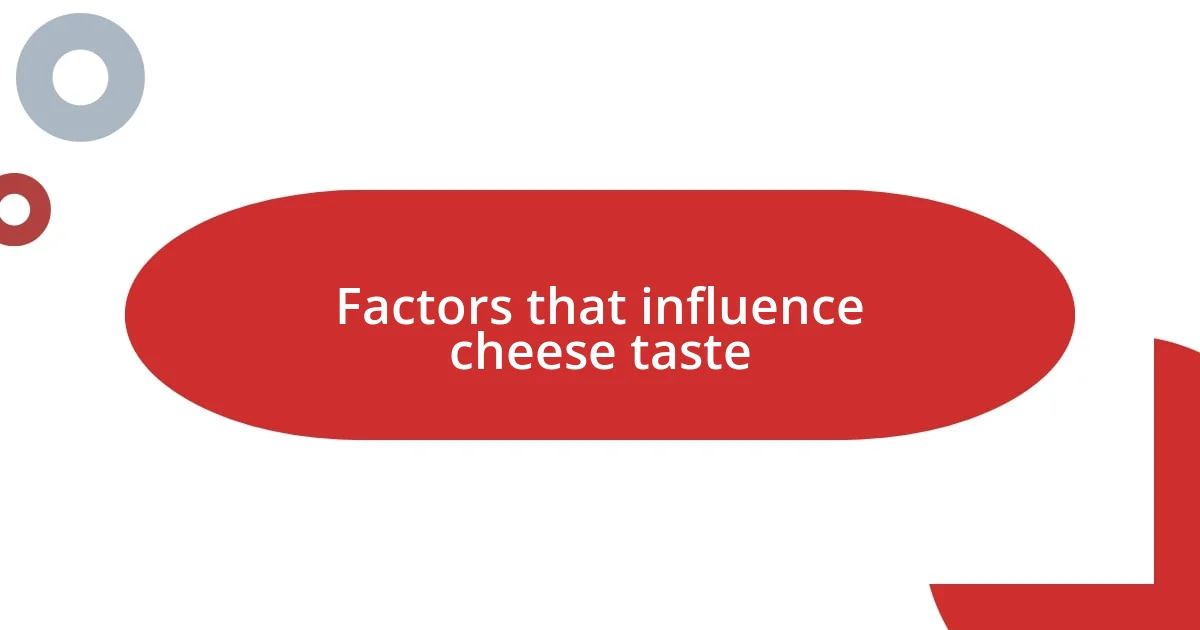
Factors that influence cheese taste
The taste of cheese is influenced by a myriad of factors, and I find it fascinating how each element plays a pivotal role. From the milk source to the aging process, these characteristics add layers of complexity that elevate the experience. I still remember a cheese tasting where the distinct flavor of sheep’s milk in an aged Manchego transported me back to a sun-drenched Spanish hillside. It’s this interplay of origins and processes that shapes our cheese preferences.
When considering what influences cheese taste, here are some key factors to keep in mind:
- Milk Type: Cow, goat, sheep, or buffalo milk all produce different flavor profiles.
- Aging Process: Longer aging can intensify flavors; a young Gouda is sweet, while a well-aged one is rich and caramel-like.
- Terroir: Just like wine, the region’s soil and climate affect the milk’s flavor.
- Cheesemaking Techniques: Techniques, like pasteurization or raw milk use, create unique tastes.
- Additives and Flavorings: Ingredients like herbs or spices can dramatically transform a cheese’s profile.
Every time I dive into the world of cheese, I’m amazed at how these factors harmonize to create something truly special.
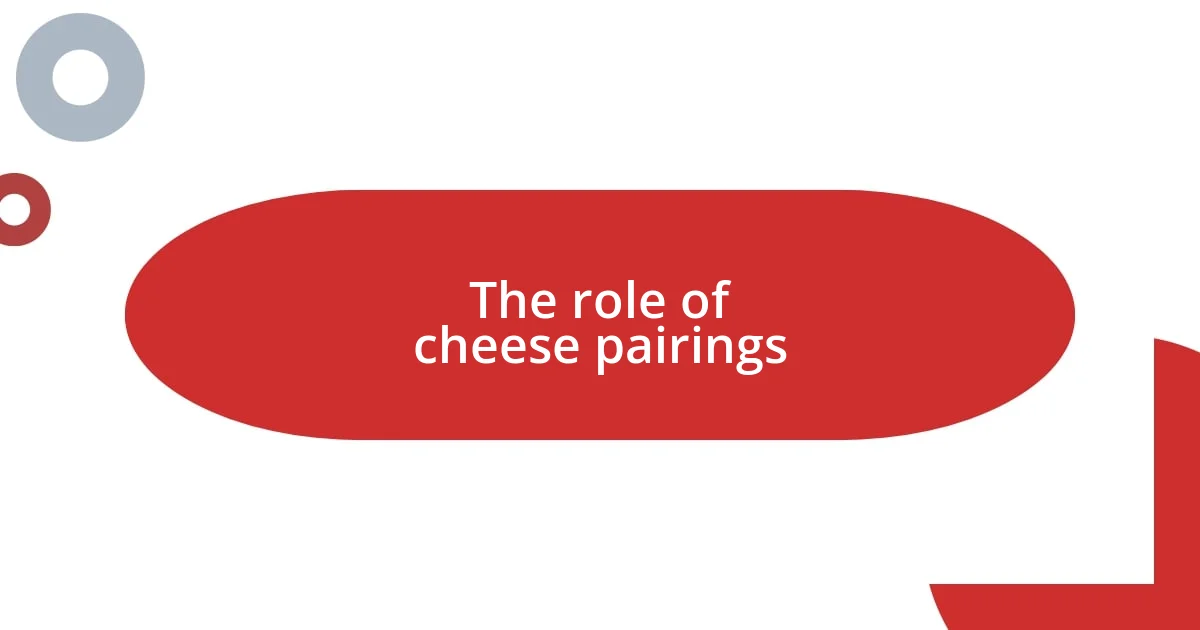
The role of cheese pairings
Pairing cheese with other foods or beverages can elevate the entire tasting experience. I remember a delightful evening spent with friends when we experimented with various wine and cheese combinations. We discovered how a creamy Brie could taste even better when accompanied by a rich, fruity Merlot. It’s intriguing how the right pairing can enhance the flavors and textures, creating a memorable culinary moment.
The contrast of flavors is particularly captivating in cheese pairings. For instance, I once paired tangy goat cheese with sweet honey and wondered how such opposing flavors could harmonize so beautifully. This delightful surprise made me realize that exploring different pairings can completely change how we perceive cheese. What unusual combinations have you tried that led you to unexpected flavor discoveries?
Moreover, the textures in pairings play a crucial role in shaping the overall experience. I recall having a simple yet profound revelation when I paired aged cheddar with crispy apple slices. The crunch of the apples alongside the smoothness of the cheese created a playful balance. It’s these little moments that remind me of the joy found in experimenting with cheese pairings—a delicious adventure waiting to unfold on every plate.
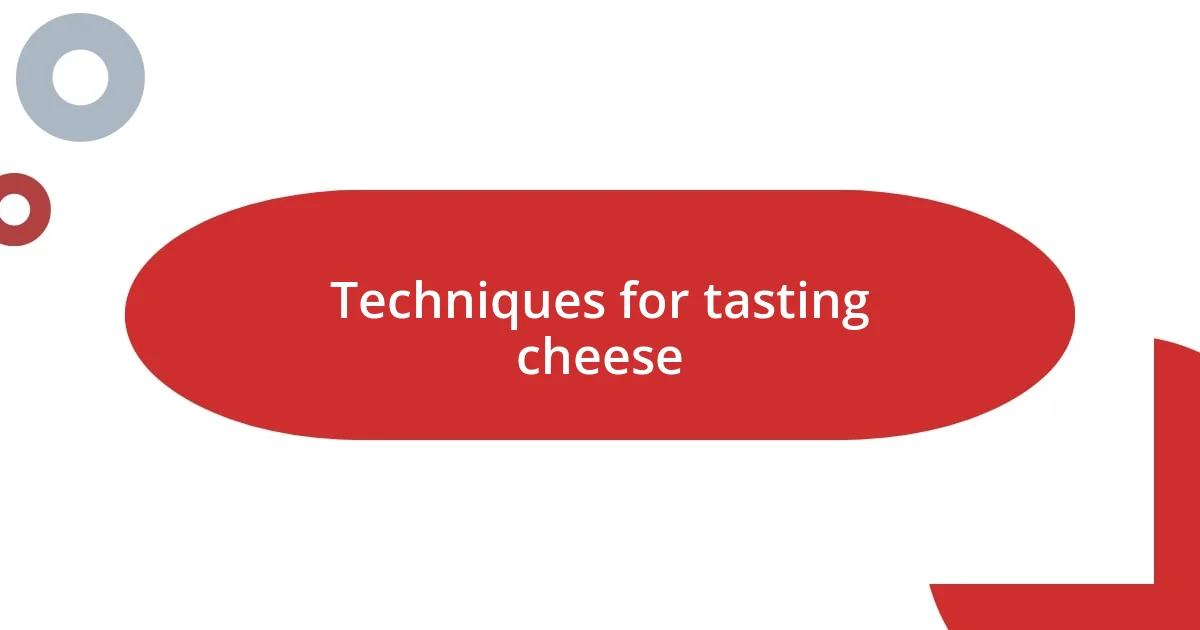
Techniques for tasting cheese
To fully appreciate cheese, I’ve learned that the way we taste it can significantly enhance our experience. One technique I love is the “savoring method.” This involves taking small bites and allowing the cheese to melt slowly on the palate. I find that this approach lets me dissect the complex flavors and textures, almost like a mini-cheese meditation. Have you ever noticed how a soft Camembert or a tangy Roquefort reveals new notes with each nibble?
Another interesting technique is to use aroma as a guide. Before even tasting, I often take a moment to smell the cheese deeply. I’ll close my eyes and inhale the aromas, which can be as telling as the taste itself. One time, I encountered a blue cheese that had a distinctly earthy scent, which set my expectations for a bold flavor. Was I surprised when that earthiness transformed into a creamy, buttery finish! The interplay of aroma and taste is something I definitely cherish.
Finally, I’ve also enjoyed experimenting with a “texture tasting” technique. I focus on how the cheese feels in my mouth before considering its flavor. For instance, biting into a crumbly feta gives me an entirely different sensation compared to the smoothness of a fresh burrata. It’s almost like a little adventure for the senses! Each texture can evoke personal memories, like the first time I encountered the creaminess of a burrata at a rustic Italian trattoria. How do you feel when a cheese’s texture catches you by surprise?
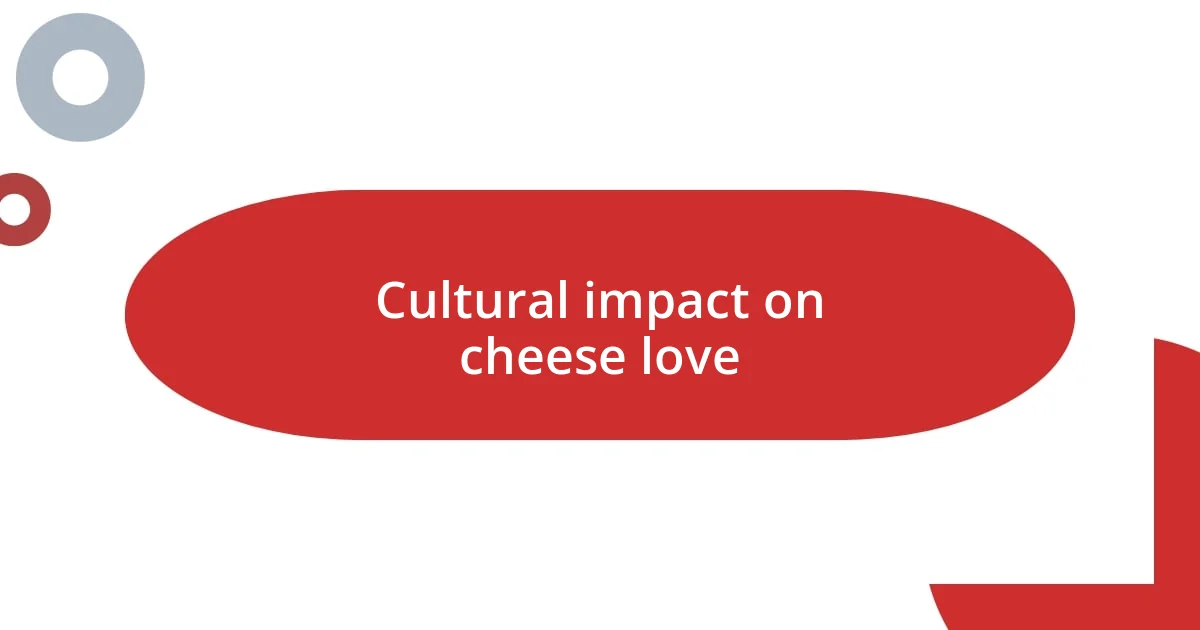
Cultural impact on cheese love
Cheese has an incredibly rich history intertwined with culture, shaping our perceptions and appreciation. I vividly recall my trip to France, where cheese is often celebrated as a work of art. Visiting a local fromagerie, I felt the collective pride of the community as they spoke about their distinct regional cheeses. It’s fascinating how a simple piece of cheese can reflect the land it comes from and the traditions it upholds. Have you ever wondered what stories a cheese might tell from its homeland?
Cultural celebrations often center around cheese, revealing just how much we love it. During a family gathering, we indulged in a traditional Italian cheese platter while reminiscing about our roots. The aroma of Parmigiano-Reggiano filled the room, and I could feel a warmth in my heart as we shared stories, laughter, and, of course, bites of that delightful cheese. The experience reminded me that cheese is not just food; it’s a medium that connects us to our heritage and cherished memories. What memories does cheese evoke for you?
Moreover, cheese often plays a pivotal role in various ceremonies and festivities around the world. I remember attending a wedding where the couple incorporated a stunning cheese tower instead of a traditional cake. It was a thrilling moment as guests admired the artistic display, showcasing an array of flavors. It struck me that cheese can symbolize unity and celebration, just like any other cultural staple. Isn’t it interesting how a meal can bring people together, transcending boundaries and creating moments we’ll never forget?
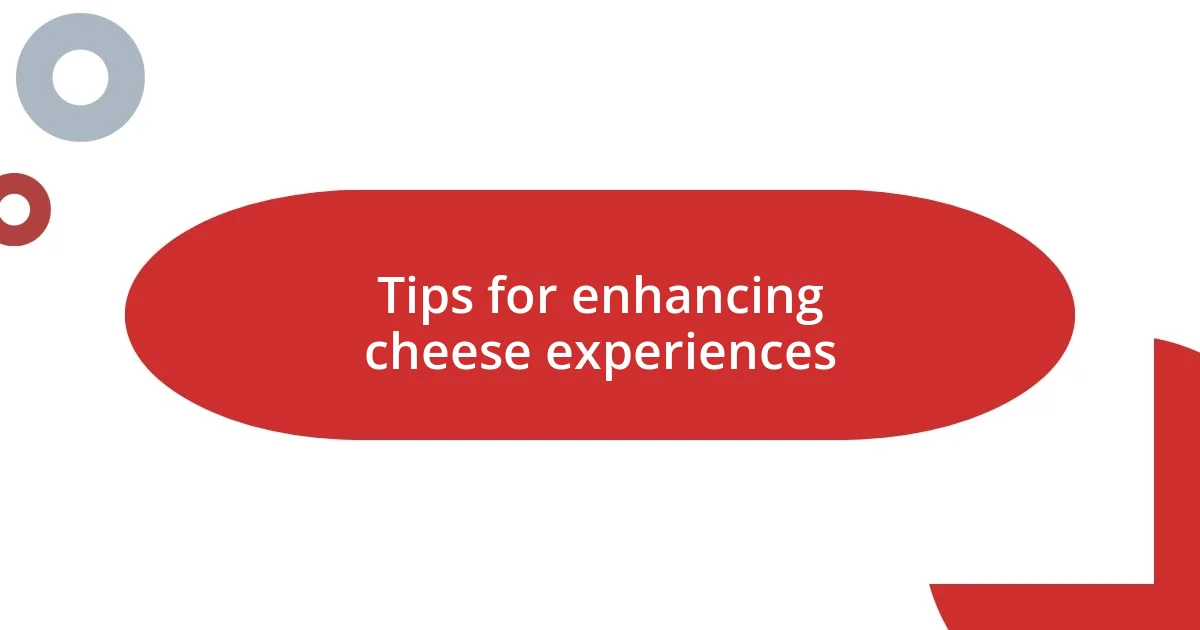
Tips for enhancing cheese experiences
To elevate your cheese experience, I often recommend pairing cheeses with complementary flavors. One great combination I’ve enjoyed is pairing aged Gouda with a drizzle of honey. The sweet and nutty profiles of the cheese and the honey danced together beautifully, creating a memorable tasting experience. Have you ever considered how something as simple as a drizzle could transform the entire flavor?
Another tip I’ve found invaluable is to think about presentation. A beautifully arranged cheese board can enhance not only the taste but the overall enjoyment of cheese. I once arranged a platter with vibrant fruits, crunchy nuts, and a variety of cheeses, each cut into elegant shapes. The visual appeal prompted great conversations and excitement among my guests. How do you think the aesthetics of food can influence our eating experience?
Lastly, I can’t stress enough the importance of temperature. Serving cheese at room temperature allows the full spectrum of flavors to shine. I’ve tasted chilly Brie straight from the fridge and noticed a muted flavor profile. It was only after letting it sit out for a while that the rich, creamy essence truly unfolded. Have you experienced the difference in flavor when cheese warms up? It’s like briefly unlocking its hidden personality!

